Reply To:
Name - Reply Comment
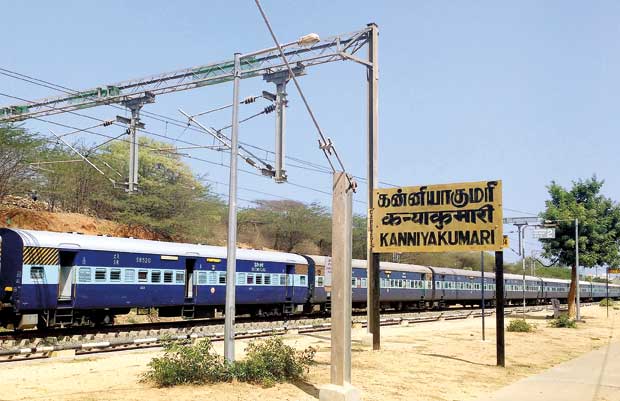 The platform of Kanyakumari railway station
The platform of Kanyakumari railway station
 worth paying a visit to. With majestic hills, seashores, green paddy fields, friendly people and delicious food, Kanyakumari is one of the most mesmerising destinations in India. It is famous as a beach paradise thronged by local and foreign visitors.
worth paying a visit to. With majestic hills, seashores, green paddy fields, friendly people and delicious food, Kanyakumari is one of the most mesmerising destinations in India. It is famous as a beach paradise thronged by local and foreign visitors. 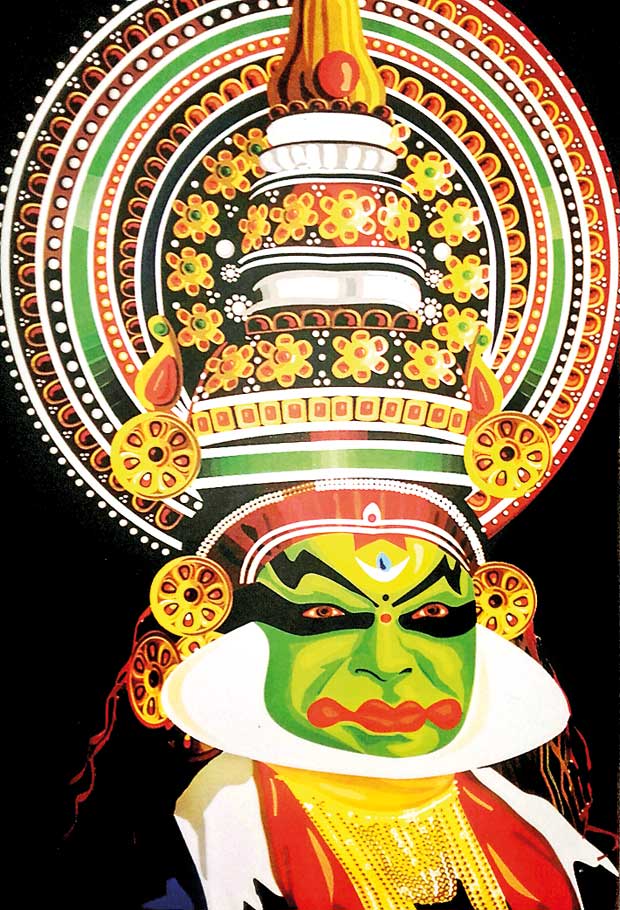 Face art of Kathakali, a popular folk art form of Tamil Nadu
Face art of Kathakali, a popular folk art form of Tamil Nadu
Kanyakumari was known as Cape Comorin during the British regime. After independence, the states of India were separated on a linguistic basis. As a result, Kanyakumari separated from the Kerala state, as the majority of people were Tamils. Apart from geographical and environmental significance, Kanyakumari also has historical and religious importance connected with the Hindu community, another reason for the increasing number of national and international visitors. The Land’s End is unique because it gives tourists the ultimate travelling experience.
The name ‘Kanyakumari’ was derived from the Hindu Goddess Kumari Amman. The Temple of the Hindu Goddess Kumari Amman is an important place to visit in any traveller’s diary.
According to Hindu beliefs and mythology, Kanya Devi aka Parvati, was to marry Lord Shiva but the marriage did not take place. Some say Lord Shiva did not show up at the wedding. As a result, Kanya Devi remained a virgin, called Kanya Kumari. She is now considered a virgin goddess in the Hindu religion. The Hindus believe that if you make a wish inside the Kumari Amman Temple, the probability for the wish being fulfilled is high due to the power of the goddess. With such wishes in mind, thousands of Hindu devotees, people from every part of India and abroad visit the temple everyday. There is no peak season at the temple. When we visited, we noticed a few foreigners who had applied Raktha Chandanam (red sandalwood powder) on their foreheads, waiting in the queue to enter the temple. The temple also has fascinating architecture from the ancient period.
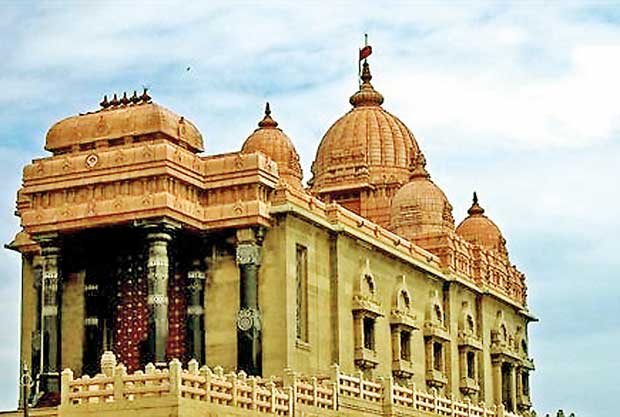 Kumari Amman Temple
Kumari Amman Temple
The twin rocks in the seas off the Kumari Amman Temple are believed to have been created in memory of the famous Indian philosopher Swami Vivekananda. Swami Vivekananda, a Hindu monk, is a celebrated spiritual leader in India. Visitors are brought to see the rocks and surroundings via ferry services. The ferry journey from the sea to the land to the Vivekananda rocks is fully worth the fee.
Adjoining the rocks is the ‘Thiruvalluvar Statue’, a 133 ft monument situated at a distance of 400m from the Kanyakumari coastline. The area surrounding the statue is also very attractive. Hindus say the statue was built in memory of the famous Indian Tamil poet and saint Thiruvalluvar. The ferry journey takes visitors to both the Vivekananda rocks and the Thiruvalluvar statue. The wonderful sight of the sunrise and sunset in Kanyakumari is beyond description, because both the sunset and the moon can be seen simultaneously on the horizon over the ocean on full moon days. Thousands of people gather every morning and evening to experience this sight.
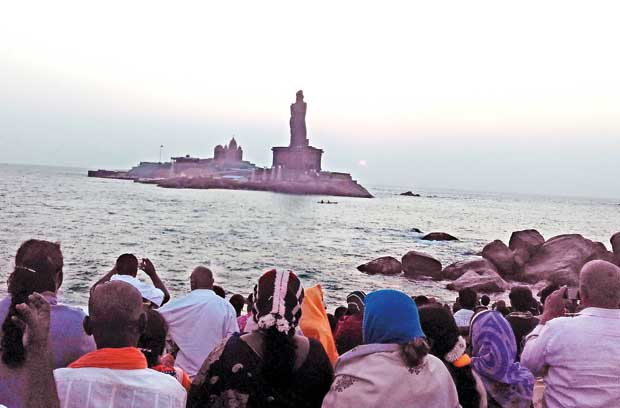 People watching the sunrise near the Swami Vivekananda rocks and Thiruvalluvar Statue
People watching the sunrise near the Swami Vivekananda rocks and Thiruvalluvar Statue
Vattakottai Fort (Circular Fort) is another tourist spot in the Kanyakumari town. The Vattakottai Fort is said to have been built in the 18th Century by the Dutch Captain Eustachius De Lannoy of the Dutch East India Company in the Kingdom of Travancore, which is now Kerala. Captain De Lannoy was a former Dutch naval officer who lived during the rule of King Marthanda Varma of the Travancore Kingdom. The fort was constructed with large blocks of rectangular granite and 25-26 ft high walls as a military base to protect the Kumari Harbour. The Fort is currently maintained by the Indian Archaeological Department.
Since the town is in a coastal area, there are plenty of stalls and outlets where you can buy ornaments, jewellery and household items made out of seashells. Saris, textiles and handloom garments are also worth a buy. Shopping in Kanyakumari is a pretty good shopping experience as the goods are reasonably priced. If you enjoy the beauty of nature, you will not be disappointed by a trip to Kanyakumari, where you can visit the Swami Vivekananda Rock Memorial, Kumari Amman Temple, Thiruvalluvar Statue and the Gandhi Memorial.
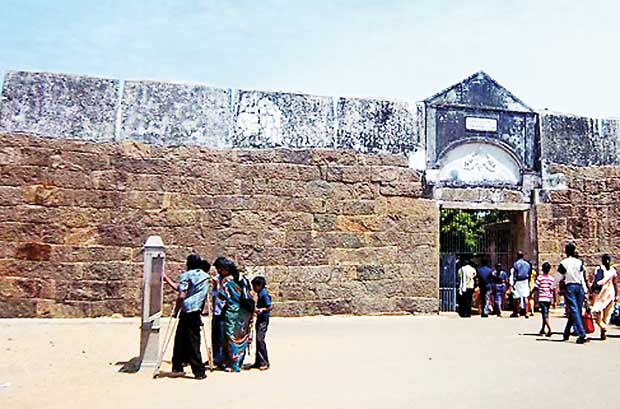 18th century Vattakottai Fort
18th century Vattakottai Fort
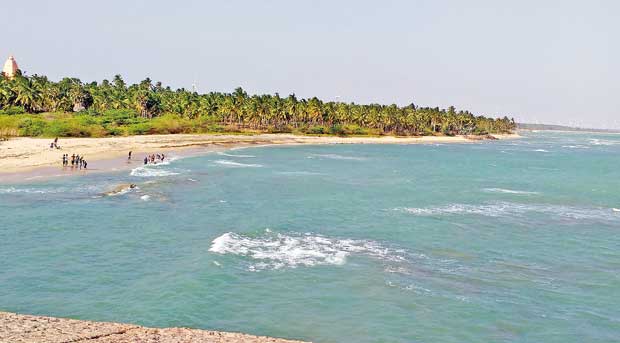 Scenic Kanyakumari beach
Scenic Kanyakumari beach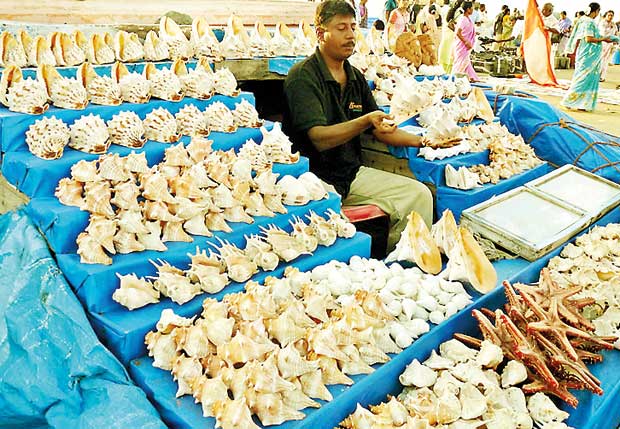 Seashell marts
Seashell marts 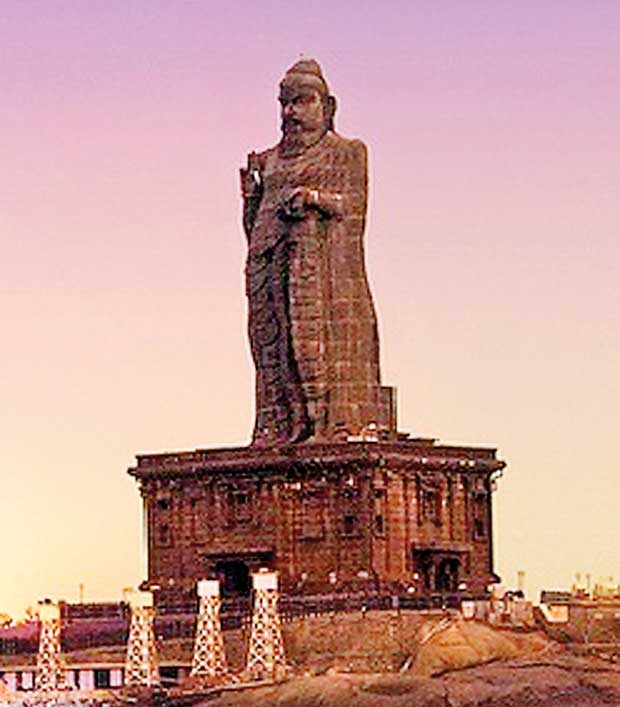 The Thiruvalluvar Statue
The Thiruvalluvar Statue